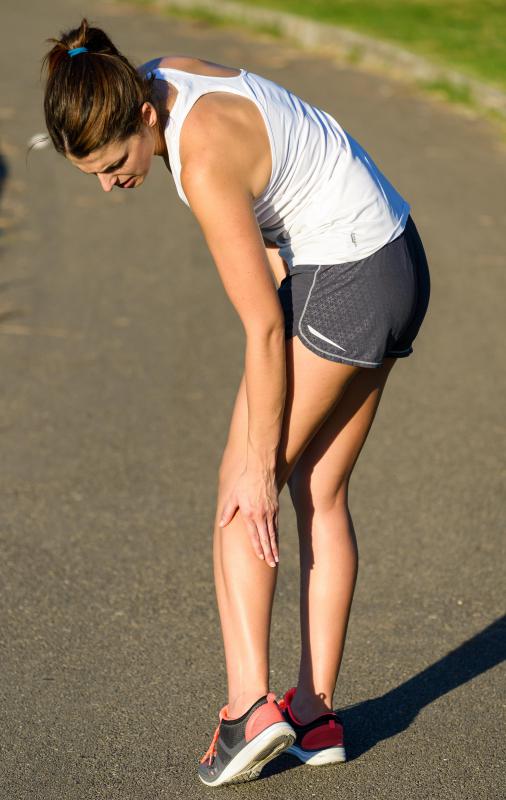At WiseGEEK, we're committed to delivering accurate, trustworthy information. Our expert-authored content is rigorously fact-checked and sourced from credible authorities. Discover how we uphold the highest standards in providing you with reliable knowledge.
What Is Midfoot Running?
In the running world, a debate is constantly raging for years over the best way to position the foot during a typical running gait. Several options exist, the most common of which is the heel running gait. A less common option is the midfoot running option, and the newest and most controversial option is the forefoot running gait. All of these different types of gaits essentially dictate where the weight of the body is placed when a foot lands on the ground. During midfoot running, the runner will focus most of the body's weight on the forefoot as well as the center of the foot, while keeping the heel off the ground entirely.
The most common running stride involves landing heel first, since most running shoes feature adequate padding in the heel and this is usually the most comfortable type of stride. Landing heel first has significant drawbacks, however, since the human body is not really designed to run this way. A significant amount of shock is transferred to the heel and into the leg upon landing, potentially leading to injury. In order to counteract this, a runner may employ a midfoot running stride that keeps much of the strain off the heel.

During a midfoot running stride, the runner's weight will come down on the forefoot and part of the center of the foot. This is advantageous because the foot, ankle, and calf will act as shock absorbers, which means less stress is transferred to the feet and legs. This stride can be difficult, however, and new runners may find it hard to adjust to. Sprinters almost always use this type of stride because it improves a person's running speed, since the foot spends less time on the ground and more time propelling the body forward.

Midfoot and forefoot running have gained more and more attention since the advent of barefoot running shoes, which use very little padding in the sole at all. Runners need to adjust the running gait to accommodate this lack of cushioning; landing on the heels will lead to injury, but running on the midfoot or forefoot has its own set of problems as well. It is more efficient and natural for the body, but most runners are not used to this motion, which means the muscles of the foot and legs might not be prepared for the new strain. Conditions such as plantar fasciitis are more common among runners using barefoot running shoes and an altered running gait.
AS FEATURED ON:
AS FEATURED ON:














Discuss this Article
Post your comments